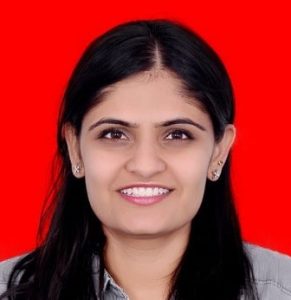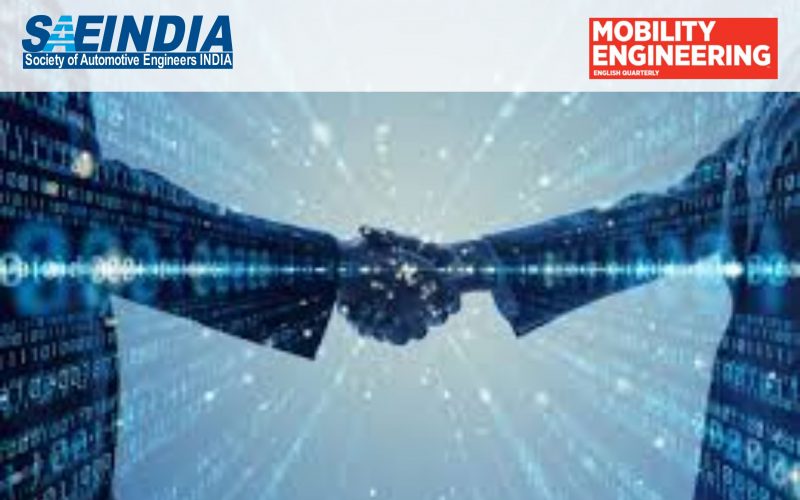Reflection on strokes from 8 folks-edited
Intention determines the outcome.
Isn’t that a life-changing statement? I deeply believe in it, thereby enjoying the positive benefits of it. Last year, I intended to interview a couple of sustainability leaders, and the SAEINDIA team provided all the resources to make it happen.
Beginning of the EnvironStory:
To recap- In Feb. 2020, I was introduced to the SAEINDIA branding and communication (B&C) Chair, Dr. Arun, to whom I shared my inclination to volunteer in one of the SAE initiatives. Come June, Dr. Arun asked,
“Can you help us with dual goals of digital presence and women participation within the SAE forum?”
The rest as they say is history, and ‘EnvironStory’ was born in July. Our intention of dispersing knowledge, ideas, and experiences revolving around sustainable mobility through powerful stories of the women leaders translated into the interview write-ups on the SAEINDIA website. I am happy to share that in the process we have created diverse role-models for young mobility engineers including myself to adopt a sustainable approach.
As it is rightly said, “People inspire others to inspire themselves.”
For starters, we decided to focus on 12% of the total SAE women members who would further help us in mobilizing the diversity in digital and physical space. The diversity part was handled by keeping gender constant and playing with the industry, role, and academic background.
Lessons from the EnvironStory:
So far, we have reached out to 8 women leaders for publishing their stories. Every quarter, we plan to interview more and offer frameworks, summaries, and lessons learned to our Mobility Engineering readers.
I hope the insights shared below benefit you especially, on ‘Lessons to apply for embracing and improving automotive product development for sustainable mobility space.’
- Rashmi urdhwareshe:
- Past Director of ARAI INDIA
- Incoming first-ever woman president of SAEINDIA
Lesson learned: The emphasis on choosing an integrated transportation solution, whenever facing complex challenges in automotive products. This profound thought is reflected in her rhetorical questions to us.
“What are automotive professionals wanting to achieve? Is it an automotive product or an integrated transportation solution? When their (automotive professional’s) focus will align on providing a transportation solution, it will enable automobile users to choose any transport medium between 2W to the bus with the same convenience, safety, efficiency, and green mobility factors.”
- Thirumalini. S.:
- Chairperson of Mechanical Engineering, Amrita Vishwa Vidyapeetham
- Eng. Education Board Chair of SAEINDIA
Lesson learned: To evaluate the feasibility and environmental aspect of the solution, whenever choosing between multiple alternatives. Dr. Thirumalini aptly described it as,
“Sustainable mobility is the solution which depletes little natural resources and brings social and health inclusiveness. Most importantly, this solution need not be less economically viable.”
Lesson learned: To solve critical issues, you need to be aware of them. Mrs. Pamela highlights the critical issues prevailing in the existing automotive industry.
- Enforcement: Today’s automotive industry is observing a strong push to bring in state-of-the-art products and regulatory compliance. But there is no push on the analysis of the user and its behaviour. This gap widens the bridge between efforts and impact translation.
- Uniformity: There exists a dire need to produce standardization of rumble strips or road bumps. Such norms will prohibit any more damage to the road and vehicles alike.
- Promotion of Public Transport: The clean, efficient, and comfortable public transport would mean more people would use it.
- Ujjwala K.:
- General Manager and leading Technology group of ARAI
- Member of SAEINDIA
Lesson learned: When working on the design and development of multiple automotive technologies, the key is to follow the below advice by our expert,
“Today’s automotive is not uni-directional. We need young ignited minds from cross-functional teams to engineer solutions together. Each individual should have the ability to un-learn to upskill themselves. They should focus on gaining good system engineering and communication skills.”
- Sarita N.:
- Former Technical Adviser of CII
- Member of SAEINDIA
Lesson learned: No matter at what level of the corporate hierarchy you are at, if you want to excel as a self-driven individual contributor/ leader, the following three aspects from the ‘3 eye buddha’ principle are for you.
- Eye for Control- Maintaining the standard and abiding by customer and supplier requirements,
- Eye for Continuous Improvement- Adding value by focusing on continuous improvement; it also helps in better alignment with changing technology and customer needs,
- Eye for break-through-Building conceptual skills and capabilities to create future business.
Lesson learned: How do you maximize the positive experience for your customer? By adding values to their lives. Mrs. Banoo goes two steps further and follows the below framework of value-addition to the lives of customers, organizations, and society.
- Understanding customer needs (implicit and explicit): By being mindful of the changing customer needs and market trends such as technology updates or obsolescence.
- Considering scalable technologies: To avoid re-work, loss of valuable customers, or inconvenience, you can architect your product to have scalability property.
- Observing dynamic development strategies: To align with customer needs and scalable technologies, you need to develop strategies that will ensure benefits to the customer, your organization, and society.
- Seema Chopra:
- Associate Technical Fellow and Global Technical Leader at Boeing India
Lesson learned: Do you want to have a competitive advantage over your competitors? One of the sure-shot ways is to cultivate an innovative mindset. Dr. Seema shared with us the 4E framework for the same.
- Embrace- to encourage risk-taking and acceptance of innovative ideas,
- Evaluate- to check the feasibility of the chosen idea,
- Envision- to find out whether it aligns with your business or individual goals,
- Engage-to tweak it as per the customer’s needs.
- Jeya P:
- President and Founder at JP Research
Lesson learned: Is it easy to find out your passion? And once you do is it possible to stick to it? Mrs. Jeya answers it through the below advice.
- In your initial years, you are not going to know what you are going to be passionate about,
- Be open-minded and try different things,
- Be resilient and take failures as opportunities.
Quantitative Progress on our dual goals:
We have seen a couple of extra-ordinary results in the process of publishing life stories of these 8 women leaders–
- the rise of SAE website’s ranking as per Google Analytics,
- the engagement on the social media platform, LinkedIn, saw posts getting 10,000+ impressions for each post,
- the appreciation and love poured by SAE members in terms of comments (25+) continue to propel these and upcoming women leaders.
We are proud of the tangible and non-tangible impact this initiative is creating so far. It would not have been possible without the constant support of Dr. Arun, the SAEINDIA team (especially, Mr. Seshadri and Ms. Ayisha), and our leaders themselves.
All these individuals are contributing towards an accessible, efficient, safer, and greener future. How about you? When do you intend to start your own sustainable journey?
To get started, go check out full articles on these leaders at https://saeindia.org/about-us/women-leaders-speech/.
 |
Ms. Riya Shah, Functional Safety Manager, Mahindra Electric, interviewed and edited Lata’s story on behalf of the SAEINDIA group. We at SAEINDIA, thank Lata V. and Riya S. for sharing inspirational and aspirational leadership stories. |



